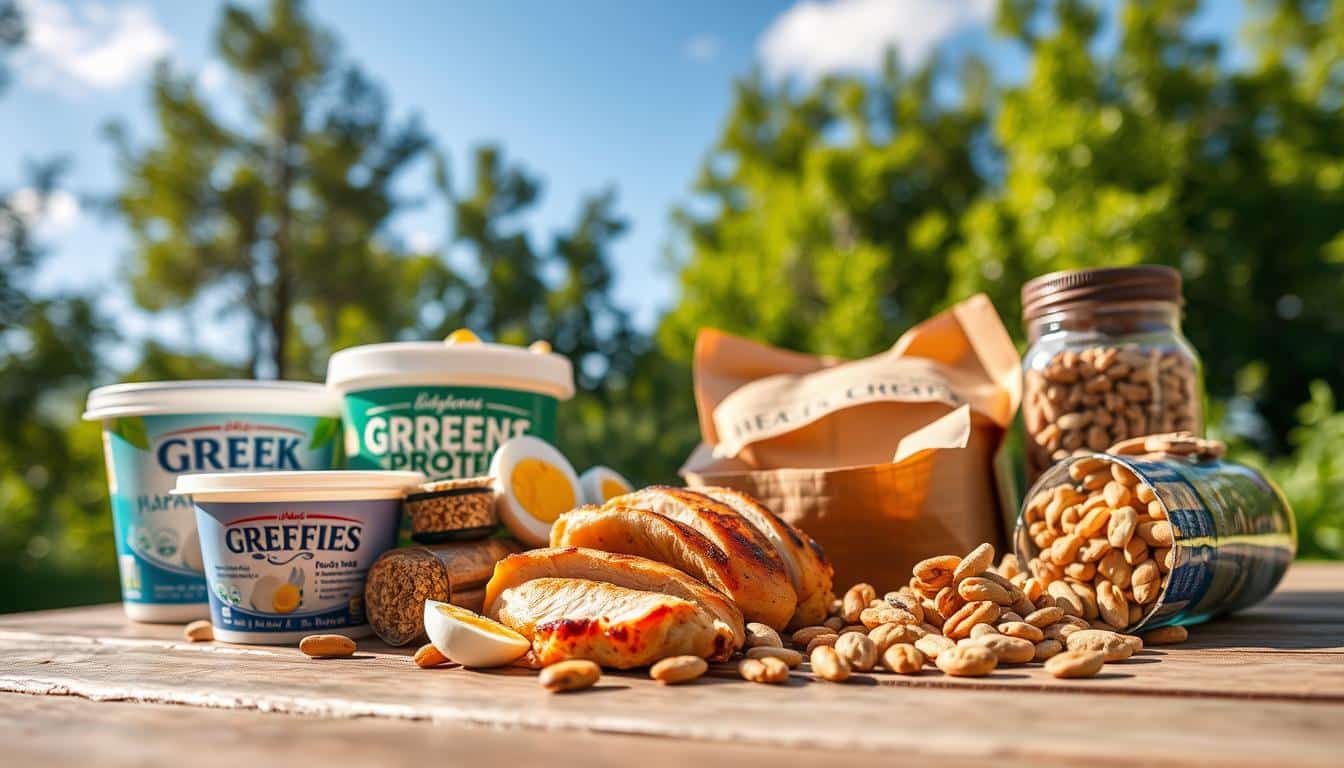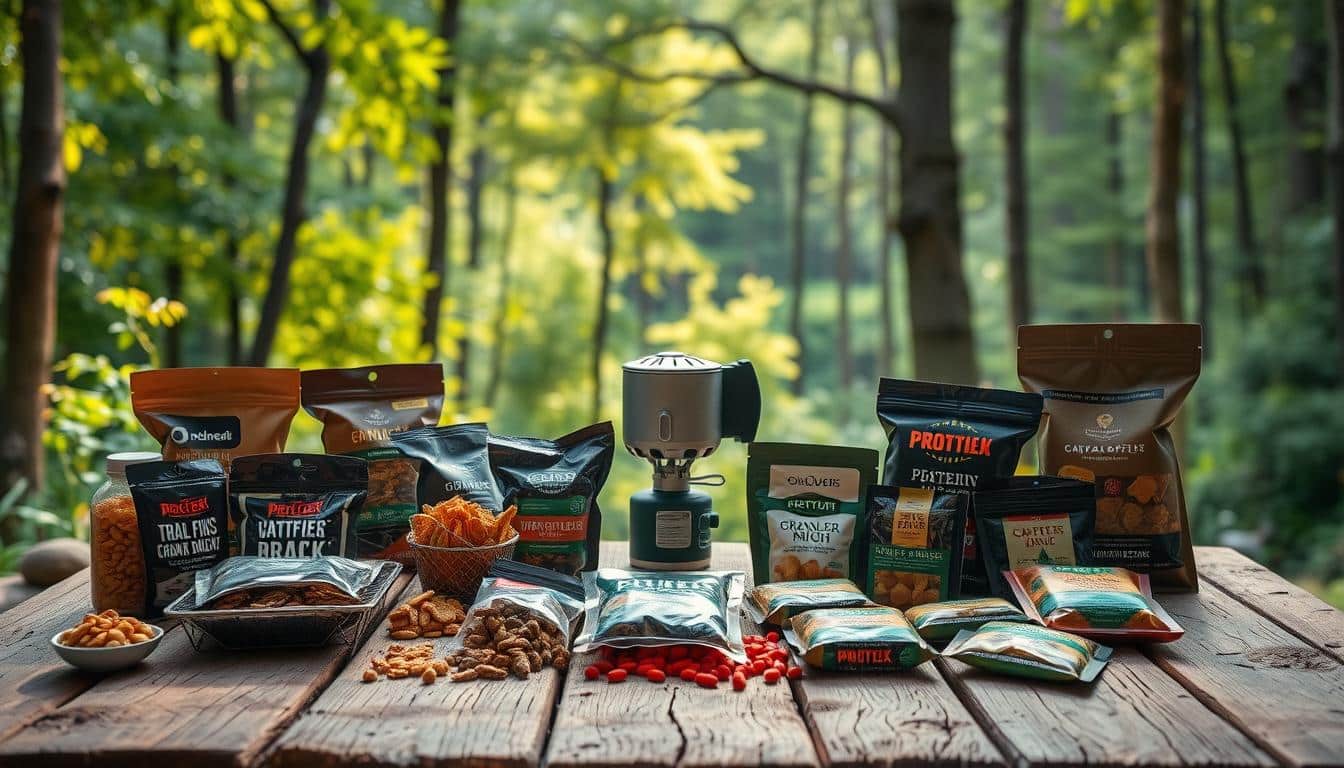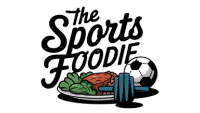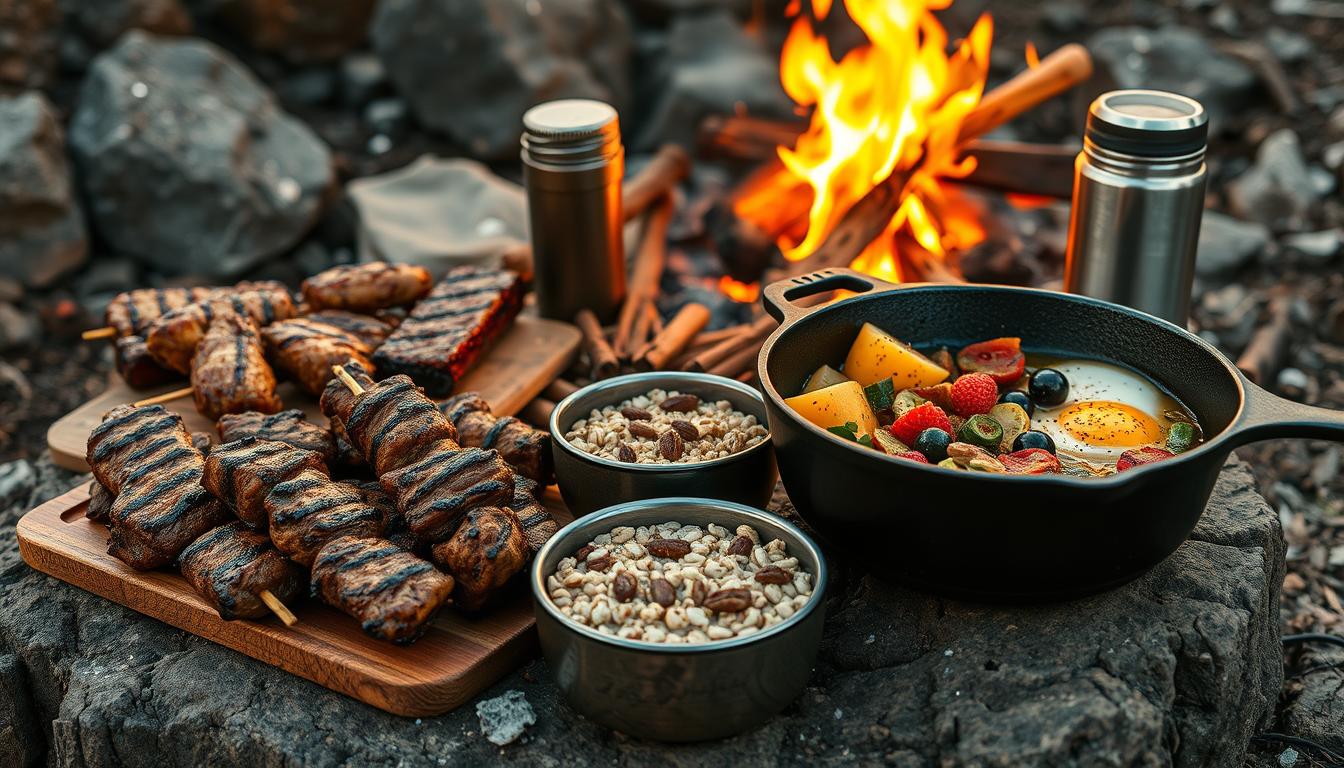Ever wonder why some people return from outdoor trips energized rather than exhausted? The secret often lies in what they eat. When you’re hiking trails or setting up camp, your body needs smart fuel that works as hard as you do.
Active days outdoors demand more from your muscles and mind. That’s where nutrient-rich food becomes essential. We’ll show how simple choices can boost stamina during climbs and speed recovery after kayaking – without complicated recipes or heavy gear.
Think about your last trip. Did you feel drained halfway through? Many campers underestimate their nutritional needs when breathing fresh air and burning extra calories. Your meals should adapt to your activity level, not the other way around.
You don’t need a chef’s skills or a full kitchen. With clever planning, you can create satisfying dishes using minimal equipment. We’ll share tricks for no-cook options that pack flavor and nutrition. From trailside snacks to hearty dinners, every bite should serve your adventurous spirit.
Ready to transform how you eat in the wild? Let’s explore practical solutions that keep you strong from sunrise to stargazing.
Understanding the Role of Protein in Camping
Many outdoor enthusiasts focus on gear and routes but overlook their body’s needs. What you eat directly impacts how far you can hike, how quickly you recover, and how much you enjoy the experience. Let’s break down why certain nutrients matter more when you’re pushing your limits in nature.

Why Your Body Craves More During Activity
Strenuous movements like climbing or paddling create tiny tears in muscle fibers. Your body uses amino acids from food to repair these micro-injuries. Without enough fuel, you might feel sluggish or sore the next day.
Balanced intake also stabilizes energy. Unlike quick-burning carbs, nutrients from quality sources release steadily. This helps avoid sudden crashes when you’re miles from camp.
Calculating Your Personal Needs
Daily requirements vary based on weight and effort level. Use this simple guide:
| Activity Level | Protein per kg | Example (70kg person) |
|---|---|---|
| Light walking | 1.2g | 84g daily |
| Hiking with gear | 2g | 140g daily |
| Multi-day trekking | 2.5g | 175g daily |
Aim for 2g per kilogram if you’re active outdoors. Pair this with complex carbs and healthy fats for lasting power. Remember: proper fueling lets you tackle tougher trails and wake up ready for more.
No-Cook Meal Options for Busy Campers
Time spent outdoors shouldn’t mean sacrificing tasty, energizing food. Let’s explore simple solutions that keep you fueled without requiring heat or complex prep. These ideas work whether you’re racing to catch sunrise views or need quick fuel between activities.

Pita Pizzas and Wraps
Turn flatbreads into portable feasts. Spread sauce on pitas, layer with cheese and pepperoni for instant pizza vibes. Wraps shine with pre-cooked proteins like tuna or rotisserie chicken – just add veggies and roll.
| Base | Protein | Toppings | Sauce |
|---|---|---|---|
| Tortilla | Canned chicken | Corn + black beans | BBQ + ranch |
| Pita | Pepperoni | Spinach + olives | Marinara |
| Lavash | Deli turkey | Bell peppers + onions | Hummus |
Quick Sandwiches and Bagel Ideas
Bagels withstand trail jostling better than regular bread. Try these combos:
| Bagel Type | Spread | Toppings |
|---|---|---|
| Whole grain | Cream cheese | Salami + pickles |
| Cinnamon raisin | Peanut butter | Banana slices |
| Everything | Mustard | Turkey + cheddar |
Pro tip: Pack ingredients separately to prevent sogginess. Assemble when ready to eat for maximum freshness. You’ll spend less time prepping and more time exploring.
Nutritious Recipes for Energy and Recovery
After hours on the trail, your body deserves meals that rebuild and refresh. These three no-fuss recipes deliver balanced nutrition without requiring campfire cooking. Each combines quality ingredients to help muscles recover while keeping energy levels steady.
Chicken Salad Wraps and BLT Variations
Mix 10 oz canned chicken with grapes, red onion, and spicy pickles for a sweet-and-tangy twist. The Greek yogurt dressing adds extra protein while keeping things light. Pack the mixture separately and assemble wraps at camp to maintain crunch.
For BLTs, layer pre-cooked bacon with avocado slices and juicy tomatoes. Use hearty whole-grain bread to prevent sogginess. Both options give you 20+ grams of protein per serving – perfect after a morning hike.
Bagel Sandwiches and Pinwheels
Spread cream cheese on everything bagels, then stack with turkey and crisp lettuce. Need something shareable? Roll tortillas with salami, spinach, and pickles before slicing into pinwheels. These make-ahead meals stay fresh for days when stored properly.
Pro tip: Freeze dressings and spreads in small containers. They’ll act as ice packs in your cooler before doubling as flavor boosters. With these recipes, you’ll spend less time prepping and more time enjoying sunsets.
Simple Ingredients for Quick Meal Prep
Smart meal prep starts with choosing ingredients that multitask. Focus on items that work across breakfasts, lunches, and dinners. This approach saves time and reduces what you carry.
Build around shelf-stable basics like whole grain tortillas and canned proteins. These form the base for wraps, salads, or snack boards. Pair them with pre-cut veggies for crunch without cleanup.
| Base Ingredient | Protein Pairing | Flavor Boosters |
|---|---|---|
| Bagged salad kit | Chicken packet | Naan chips |
| Tortilla | Hummus | Banana peppers |
| Crackers | Summer sausage | Pepper jack |
Charcuterie boards shine with minimal effort. Combine cured meats, cheese blocks, and nuts. Add fresh fruit for sweetness that lasts days. This setup works for lunch or trailside snacks.
For plant-based athletes, swap meats for marinated beans or lentil packets. Prepped veggies and hummus keep well in coolers. You’ll maximize cooler space while keeping meals interesting.
Remember: Versatile ingredients let you adapt to weather changes or cravings. Store dressings separately to maintain texture. With smart choices, you’ll eat well without sacrificing adventure time.
High Protein Camping Meals
Fueling your adventures doesn’t require complex kitchen setups—just smart choices that keep you moving. Let’s explore options that deliver maximum nutritional impact with minimal effort.
Effortless Nutrition for Active Days
Meal replacements like Rootana simplify outdoor fueling. One shake delivers 27 essential nutrients in 400 calories—just add water. Perfect when you need quick fuel between summit attempts.
Eggs shine for their versatility. Pack hard-boiled versions or use powdered eggs with a camp stove. Each 100g serving offers 13g of complete amino acids to rebuild tired muscles.
| Option | Protein per Serving | Prep Time |
|---|---|---|
| Rootana shake | 20g | 2 minutes |
| 3 hard-boiled eggs | 18g | 10 minutes |
| Beef jerky (1 oz) | 12g | 0 minutes |
Dried meats like biltong work well for multi-day trips. While higher in sodium, they provide shelf-stable energy. Pair with nuts to balance electrolytes.
These solutions help maintain strength training results while exploring nature. Choose options matching your activity level—you’ll recover faster and tackle tougher terrain tomorrow.
Protein-Packed Snacks and Sides
The right trail snacks keep you moving longer and recovering faster. Smart choices between meals maintain energy levels without weighing down your pack. Focus on options that balance convenience with nutritional punch.
Jerky, Nuts, and Protein Bars
Kirkland Steak Strips deliver 13g of fuel per ounce while replacing lost sodium. Pair with almonds or walnuts for healthy fats that curb hunger. For quick boosts, try bars like RX or Built with 15g+ protein and 3g fiber.
| Snack | Protein | Key Benefit |
|---|---|---|
| Beef jerky | 12g/oz | Electrolyte balance |
| Almonds | 6g/oz | Sustained energy |
| RXBAR | 15g | No added sugar |
Cheese, Crackers, and Fresh Fruit
Pre-sliced cheddar stays fresh for days and pairs perfectly with whole-grain crackers. Add apple slices or grapes for natural sweetness. This combo provides 15g of fuel while satisfying cravings for texture and flavor.
Store snacks in reusable pouches for easy access. Adjust portions based on activity intensity – more during climbs, less at basecamp. These strategies prevent energy slumps so you can focus on the views, not your stomach.
Balanced Nutritional Ideas for Camping
Your campsite meals might be missing one key element: balance. Eating well outdoors isn’t just about calories—it’s about combining the right elements to power through activities. The right mix keeps energy steady and recovery quick, even when you’re miles from home.
The Four-Part Formula for Success
Every satisfying outdoor meal should include four components. This strategy supports your body’s needs while simplifying planning. Let’s break down each element and why they work together:
| Component | Role | Trail-Ready Example |
|---|---|---|
| Protein | Stabilizes energy + repairs muscles | Jerky or peanut butter |
| Veggies/Berries | Hydration + electrolytes | Baby carrots + dried mango |
| Carbs | Quick fuel source | Whole-grain tortillas |
| Fats | Long-lasting satisfaction | Almonds or olive oil packs |
Many adventurers overload on granola bars and trail mix. These simple carbs spike blood sugar, then leave you hungry. The four-part method prevents this crash by delivering nutrients gradually.
Try pairing smoked salmon with crackers, cucumber slices, and avocado. You’ll get all four elements in one packable snack. This approach turns random bites into intentional fuel that lasts from dawn hikes to evening campfire chats.
Meal Planning and Packability Tips
Smart meal planning transforms outdoor adventures from stressful to seamless. Whether you’re hiking for hours or setting up basecamp, organization determines how well you eat. Let’s explore strategies to maximize your cooler space and minimize prep work.
Efficient Storage Solutions
Frozen egg white cartons pull double duty as ice packs and ready-to-use ingredients. Stack Tupperware containers vertically to save space in bags or camper fridges. For kayak trips, use waterproof dry-bags to protect pre-portioned snacks.
Group items by meal type – breakfasts in red containers, lunches in blue. This color-coding system helps you grab what you need quickly. Soft-sided coolers mold to awkward trunk spaces better than rigid boxes.
Prepping Meals Ahead of Time
Mix chicken salad at home and store it in single-serving jars. Chop veggies for wraps and keep them crisp in airtight bags. You’ll avoid messy knife work at the campsite while keeping your trip timeline on track.
Freeze sauces in small silicone molds – they’ll chill your cooler for 24 hours before becoming pasta toppings. Planning ahead time means more moments watching sunrises instead of slicing onions. With these tricks, your energy stays focused on the trail, not meal logistics.


